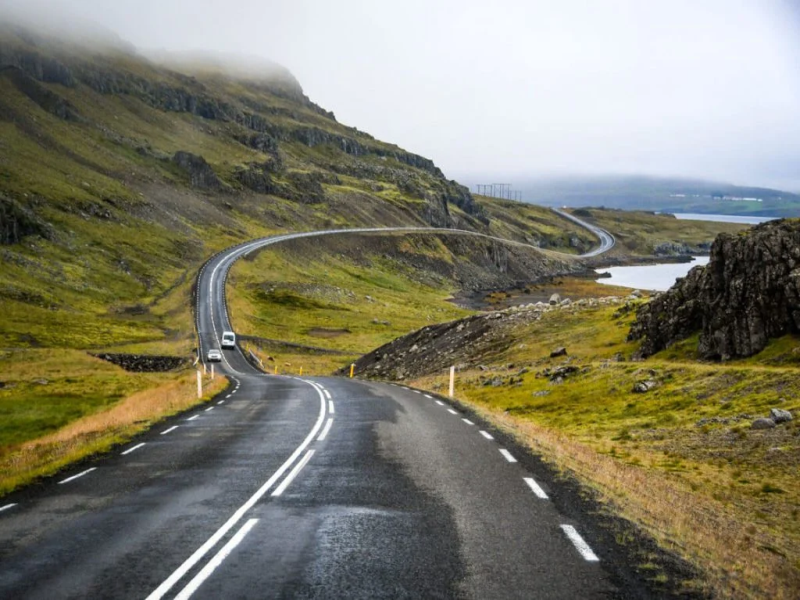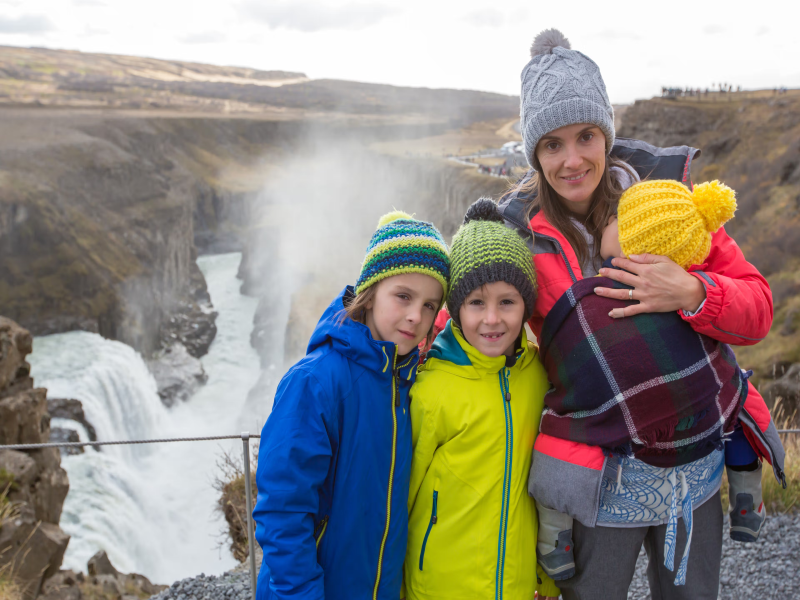Introduction
One of the world’s most beautiful and unique countries, known as the Iceland of fire and ice, is a favorite of travelers. The Ring Road is a 1332 km (827 miles) circular road traveling through numerous sites of interest from the volcanic craters and glaciers to the waterfalls and black sand beaches. However, driving the Ring Road might be a problem to some, as it requires certain experience in driving in Iceland and in winter.
It is my intention in this blog post to give out fundamental guidelines that would enable one to undertake and complete a memorable Ring Road trip. To guide your visit from when to go to which car hire to take, what roads to take and the attractions you should not miss, look no further.

Planning Your Ring Road Trip
Best Time to Visit Iceland
Best time of year to visit Iceland depends on what an individual is interested in doing. Each season offers unique experiences:
• Summer (June-August):
- Pros: The nice weather that comes with intense sunlight, comfortable climate and beautiful vegetations.
- Cons: Increased accommodation costs during this period, high volatility of the weather which can produce unfavorable conditions at any time of the year.
• Winter (December-February):
- Pros: Beautiful snowy scenery, the aurora borealis and less tourist rush.
- Cons: Reduced day light; freezing and other unfavorable weather conditions; restricted access to some areas.
• Spring (March-May):
- Pros: Fancy flowers in the spring, less people around, and the chance to see created things being born.
- Cons: Changing weather conditions, occasional washouts, and short day light in most of the locations.
• Autumn (September-November):
- Pros: This season features beautiful fall colors, less tourist influx and affordability for each tourists activities.
- Cons: Shorter daytime, unfavorable climate conditions, and probable blockage of routes.
How Long to Spend On Ring Road
Therefore, the recommended Ring Road time will vary with the rate at which the visitor plans to travel and areas that the traveler has interest in. For simple itineraries that include the main attractions, 7- 10 days is good, but for those interested in a slow pace and other less discovered places, 14- 21 days would be ideal.
Essential Items to Pack
- Warm clothing: Insulation is important first of all it is a warm jacket, next it is sweaters, and the last but not least are insulated trousers and thermal intermediate underwear.
- Waterproof gear: A waterproof coat and trouser are very important especially when the weather is instable.
- Sturdy hiking boots: Off-road and remote area travelling.
- Camera equipment: Photograph the wildest and the most beautiful sceneries ever.
- Chargers and power banks: Keep your devices powered up.
- First-aid kit: Promote health and well being, for ailments and small injuries.
- Medication: All your prescription medications you may require.
- Snacks and water: Stay hydrated and fueled.
- Guidebook and maps: With regard to your formal itinerary and the routes to be followed on paper.
- Phone charger: Keep contact and app with navigation.
Renting a Car in Iceland
Choosing the Right Car
As mentioned before, choosing the right car when renting in Iceland – so, they really should think carefully. The type of car will therefore depend with time of the year you will be visiting as well as your schedule.
- 4WD Vehicle: Suitable for the winter, and for Highlands (F-roads) in particular, as 4WD cars give a lot of traction and better stability on ice, snow, and gravel.
- 2WD Vehicle: Good for travel in summer on the Ring Road. But, do so, know that sometimes there are parts of Ring Road with gravel especially in East Fjords.
Primary insurances and Additional Covers
Highly recommended coverage is a collision damage waiver when renting a car in Iceland. Consider adding the following additional coverages:
- Gravel Protection: Prevents damage that come with having gravel roads.
- Sand and Ash Protection: Both cover the risks of losses occasioned by volcanic ash and sandstorm.
- Super Collision Damage Waiver (SCDW): The insurance policy will in one way reduce your chances of being held responsible for the damage on the vehicle.
Fuel and Gas Stations
It is easy to locate a gas station especially along the Ring Road, though again one may have to dig deep into the rural ends to find one. One should always refuel when they can, but even more often one should refuel before going on a long distance drive.

Driving the Ring Road: Essential Tips
Understanding Icelandic Road Conditions
Iceland has some of the most dangerous roads, thanks to frequent volcanic activities and the Termination of even Dangerous Road, especially during the winter season. It’s essential to be aware of the different types of roads and their challenges:
- Asphalt Roads: Highway-class roads, neatly paved, designed equally for all kinds of cars and appropriate for any environment.
- Gravel Roads: Characteristic of rural use and can be tricky to maneuver especially when the terrain is wet.
- F-Roads: Tightly curved roads that becomes unridden during winter and need 4WD vehicle with winter tires.
Driving Etiquette and Safety
- Adhere to speed limits and traffic rules: Icelanders law prohibits speeding and makes its implementation a priority.
- Be aware of sheep and other animals on the road: They can cross the road, this is in particular in rural areas.
- Use headlights during daylight hours: This gives better appearance from different angles and makes other drivers notice you from their cars.
- Drive defensively: When in Congo be careful whenever you are in the company of other drivers especially the foreigners commonly known as tourist.
- Check weather conditions before setting out: This is to expect change in weather, including short rain, snow, and fog, among others throughout the year.
Navigating the Ring Road
- GPS Navigation: To do that, clients are advised to use proven GPS navigation applications like Google Maps or Waze’s.
- Paper Maps: A paper map is fine – perhaps even better when it is old-fashioned.
- Local SIM Card: It is probably useful to buy a local SIM card for internet and for GPS navigation.
- Be prepared for unexpected road closures and detours: Hazardous weather may also limit access to roads.
Must-See Attractions Along the Ring Road
While driving the Ring Road tourists can see different beautiful views and visit various unusual places. Here are some of the must-see highlights:
Golden Circle
- Thingvellir National Park: Relatively a very famous site all over the world that is known to be a thrust which has exposed the plates North America and Eurasia pulling apart.
- Geysir Geothermal Area: It has Strokkur geyser which spits hot water every few minutes into the air reaching a quite considerable height.
- Gullfoss Waterfall: A large waterfall that proceeds through two stages into a large gorge.
South Coast
- Seljalandsfoss: A beautiful waterfall; one that you can actually walk through.
- Skógafoss: A great waterfall that provides the vantage view from the top.
- Reynisfjara Black Sand Beach: A beautiful black sand beach, interestingly shaped rocks and strong sea waves in this two clips.
- Jökulsárlón Glacier Lagoon: It is a beautiful lagoon with icebergs that come from the Vatnajökull glacier; in fact, this is an advantage to Vatnajökull glacier.
- Diamond Beach: A beach close to the place where icebergs come on the shore and melt – a fairy tale view.
East Fjords
- Seydisfjörður: A painted town with a great ambiance as well as beautiful fjord scene.
- Egilsstaðir: The largest town in the East Fjords which will afford sufficient starting point for tours in the region.
- Djúpivogur: A beautiful fishing village and the only pebble museum in the world.
North Iceland
- Akureyri: Iceland’s second biggest city having an exciting feel, and lots of natural beauty.
- Lake Mývatn: A caldera hosting a fresh water lake which has formed rich features consisting of lava formations; geothermal activities, and birding.
- Dettifoss Waterfall: The great power of European waterfall, falling into the large cleft.
- Húsavík: Close to the country there are wonderful places for whales watching.
Snæfellsnes Peninsula
- Kirkjufell Mountain: A beautiful mountain usually associated with Kirkjufellsfoss waterfall.
- Snæfellsjökull Glacier: A modern glaciered volcano that prompted Jules Verne to write a story of ‘Journey to the Centre of the Earth’.
- Arnarstapi and Hellnar: There are attractive fishing towns with beautiful views of the seascapes and ideal places for bird watching.
Budgeting for Your Ring Road Trip
Accommodation
Iceland offers a variety of accommodation options to suit different budgets and preferences:
- Camping: A cheap solution but be prepared for cold weather and occasional rain.
- Guesthouses: Low-cost and casual, and can be found with shared services.
- Hotels: Much more variation from the basic low cost to the luxurious type.
- Vacation Rentals: Great for families or group of friends and get more privacy and room to move around.
Food and Dining
- Grocery Stores: Buy groceries to reduce on expenditure of paring meals.
- Restaurants: Iceland is generally very costly, as I have pointed out several times throughout this article.
- Food Trucks: A more cheap way to get satisfying and fast food.
Activities and Tours
- Whale Watching: Something that tourists enjoy in Húsavík.
- Glacier Hiking: Cannot wait to travel and experience the ice caves and glaciers of Iceland.
- Northern Lights Tours: Pursue the northern lights especially during the winter session.
- Horseback Riding: Discover the Icelandic countryside in the way the Vikings did, on horseback.
If well-planned the Ring Road tour does not have to be expensive and I hope this post has given you ideas on how to minimize the costs whilst making the most of the journey.
Some Extra Tips regarding a Fulfilling Vacation
- Pack Light: Always travel light since this will help one avoid the creation of very many bags to carry.
- Stay Connected: Buy an SIM card or a portable wireless modem/wifi dongle from the same region as your visit.
- Respect Nature and Local Culture: Do as you do not harm, and respect the culture and people of the place you are in.
- Be Flexible: Expect changes of weather and road conditions which are difficult to predict at the moment.

Conclusion
Driving around Iceland on the Ring Road is an unforgettable experience with magnificent views, marvelous fauna and flora and an ability to discover this country on your own. But to avoid disappointments and have the best driving experience in Iceland then there are several factors that should be considered.
These are some general tips though regarding travelling in Iceland and do ensure weather and road congestions before every trip because the harsh weather conditions in winter are unpredictable. Ensure that your car is suitable for the ground, and similarly for the fuel because on the road there are long distances where no fuel stations are found. Children should avoid dangerous signs and road signs by observing that they should drive within the set speed limits and use seat belts as well as respect the traffic laws in that area.
One of the most memorable and enjoyable activities in Iceland is to drive and explore the amazing landscapes, so do not hurry – have a deep and slow jaunt all over the exploring country. Iceland’s Ring Road means fun when in search of waterfalls, geothermal sites or volcanic terrains and there is always something you think you will never come across again.
Therefore following the above tips, you can drive around the ring road road in Iceland as you make great memories of the journey.
Embarking on a journey along Iceland’s Ring Road offers an unparalleled opportunity to experience the nation’s diverse landscapes and natural wonders. To ensure a safe and enjoyable trip, consider the following essential tips:
1. Vehicle Preparation and Rental
- Vehicle Selection: Opt for a 4×4 vehicle, especially if you’re traveling outside the summer months. While a standard car is sufficient for the Ring Road, a 4WD provides added stability and traction on Iceland’s often unpredictable roads.
- Rental Considerations: Renting a car through reputable platforms like Booking.com allows you to compare different providers and find the best deals in Iceland. Additionally, these platforms offer favorable cancellation policies and excellent customer service in case of any issues.
2. Road Conditions and Safety
- Weather Monitoring: Iceland’s weather can be highly unpredictable, with conditions changing rapidly. Always check the latest weather forecasts and road conditions before setting out. The Icelandic Road Administration provides up-to-date information on road statuses and weather alerts.
- Single-Lane Bridges: The Ring Road features numerous single-lane bridges, particularly in rural areas. Approaching vehicles must yield to those already on the bridge. Exercise caution and be prepared to stop if necessary.
3. Fuel and Supplies
- Fuel Stations: Fuel stations can be sparse in remote regions. It’s advisable to fill up whenever you have the opportunity, especially before heading into less populated areas.
- Emergency Kit: Carry a basic emergency kit, including a first-aid kit, flashlight, and non-perishable snacks. While Iceland is generally safe, being prepared for unforeseen circumstances is prudent.
4. Accommodation and Booking
- Advance Reservations: During peak tourist seasons, accommodations can fill up quickly. It’s recommended to book your stays in advance, particularly in popular areas like the South Coast and around Lake Mývatn.
5. Driving Etiquette and Regulations
- Speed Limits: The standard speed limit on paved roads is 90 km/h, while gravel roads are typically 80 km/h. Always adhere to posted speed limits and adjust your speed according to road and weather conditions.
- Headlights: It’s mandatory to have headlights on at all times, day and night, to enhance visibility.
6. Seasonal Considerations
- Winter Driving: From November to April, winter tires are required in certain parts of the country due to icy conditions. Ensure your rental vehicle is equipped accordingly.
- Daylight Hours: In winter, daylight hours are limited, especially in the northern regions. Plan your driving schedule to make the most of available daylight.
7. Environmental Responsibility
- Leave No Trace: Iceland’s pristine environment is a treasure. Always dispose of waste responsibly and avoid disturbing wildlife.
- Protected Areas: Respect signs indicating protected areas or private property. Some regions may have restricted access to preserve their natural beauty.
By adhering to these guidelines, you can ensure a safe, enjoyable, and responsible journey along Iceland’s Ring Road, allowing you to fully immerse yourself in the island’s breathtaking landscapes and unique cultural experiences.
References
By following these tips and planning your trip carefully, you can ensure a smooth and enjoyable journey. Remember to embrace the unpredictable nature of Iceland and be open to new adventures.




